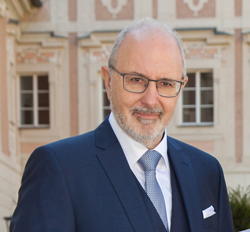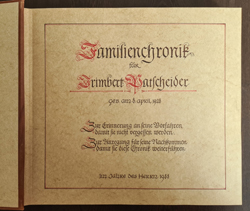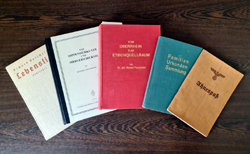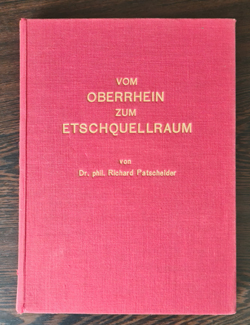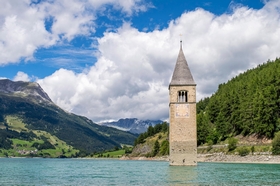About me
I am a resident of the historic iron town of Steyr where I was born and currently reside. My professional background includes serving as an IT Manager for the city council in Steyr before retiring. I am a married individual with two adult children.
In my leisure time, I enjoy various activities such as traveling, hiking, playing table tennis, and exploring genealogy. My interest in genealogy mainly centers on creating family trees and displaying them online.
My Inspiration
My passion for genealogy runs in the family, as my great-uncle, Dr. Richard Patscheider, was also involved in family research, family trees, and name research. I possess two books written by Dr. Richard Patscheider, "From the Upper Rhine to the Adige Spring Region" (published in 1967 by publishing house Robert Lerche, Munich) and "von Sippenherkunft und Siedlerschicksal" (1959 Universitätsverlag Wagner / Innsbruck-Munich).
Additionally, the manuscript no. 3992 "Family tree Patscheider 1550-1920" by Josef Wopfner (National Archives Innsbruck) served as a basis for my research. This manuscript was compiled by Josef Wopfner on the basis of the "Werfachbücher" of the district court Nauders 1547-1780, then on the basis of an excerpt from the matrices of the parish Graun in Vintschgau and various partly written, partly oral communications, around 1927.
Family Tree
The two most important sections are "My Ancestors" and "Descendants of Clauß Patscheider,", both accessible via the "Family Tree" menu.
My Ancestors
This section includes both a graphical and a textual overview. The page begins with an interactive graphic, followed by a detailed list of my ancestors.
The graphic allows you to click on individual families. When you do, a small window opens with more detailed information about that specific family. From there, you can navigate directly to the corresponding entry in the text-based list.
Descendants of Clauß Patscheider
This section follows the same structure. It also begins with an interactive graphic, followed by a textual list of Clauß Patscheider’s descendants.
Just like in the previous section, you can click on families in the graphic to view more detailed information in a pop-up window. From there, it’s easy to jump to the relevant section in the text list.
Database with Kith&Kin
My genealogy database, managed using Kith&Kin, currently contains 671 families and a total of 2,846 individuals.
Most genealogy software does not support a freely scalable graphical display of a family tree. To my knowledge, Kith&Kin is the only program that offers this feature. This kind of flexible, scalable visualization is essential for clearly understanding family relationships and connections.
